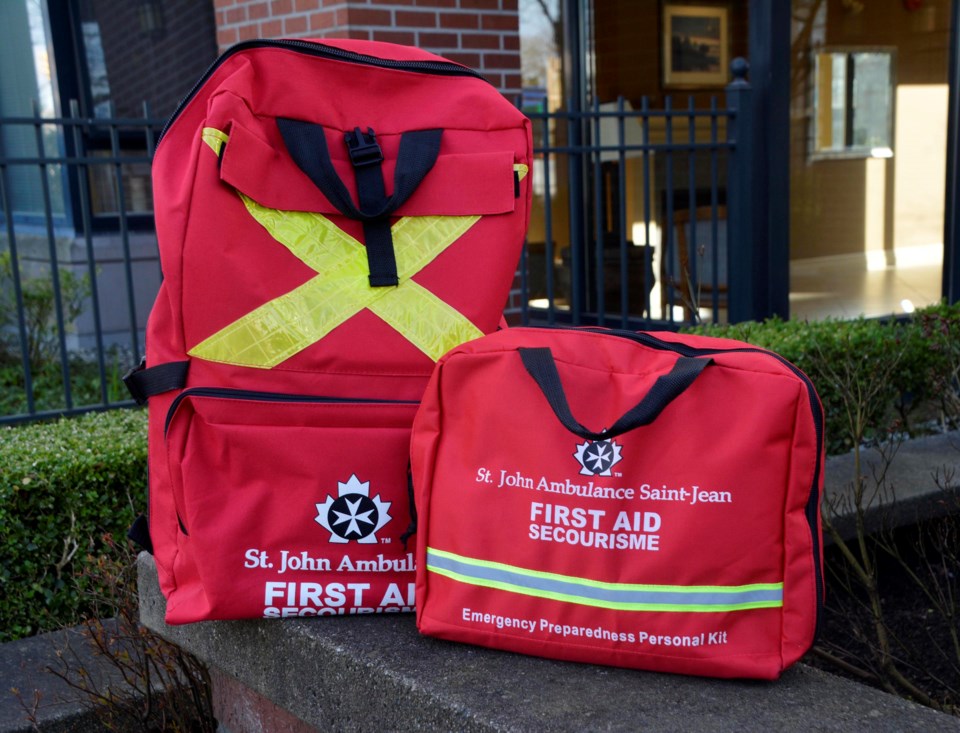This Emergency Preparedness Week, St. John Ambulance BC & Yukon is pushing all British Columbians to take three simple steps to become prepared for any and all emergencies.
Emergency Preparedness Week is May 2 to 8, a time for everyone to reflect on how prepared they are for the risks in their area.
Here in British Columbia, we face a variety of risks whether it’s earthquakes, wildfires, floods, storms, and more. Despite this, only 46 per cent of B.C. residents said they have an emergency kit, and only 39 per cent have prepared a plan, according to a 2019 survey done by Research Co.
“If someone wants to become better prepared for emergencies, we always recommend these three steps: make a plan, purchase or build an emergency preparedness kit, and get first aid trained,” said Christopher Chan, learning and development officer and first aid instructor with St. John Ambulance BC & Yukon. “With those three steps in place, you will gain an increased confidence to be able to protect yourself as well as your loved ones in the event of an emergency that may keep you trapped in your home or force you to evacuate.”
Make a plan
An emergency preparedness should include details such as dealing with potential hazards inside and outside your home, safe exits from your home, a meeting place for your household, out-of-town emergency contact information, pet care, and more.
Build an emergency preparedness kit
An emergency kit should be built to keep you safe for a minimum of 72 hours with supplies like food, water, a first aid kit, a wind-up or battery powered flashlight, a radio, and more. It’s important to also personalize the kit with items like prescription medications, solar cellphone charger, family documents, change of clothing, pet supplies, cash, and more. In the midst of the COVID-19 pandemic, it’s also important to keep masks and hand sanitizer in mind.
Get first aid trained
Having first aid training is essential for everyone. With first aid training, you will gain the knowledge to properly use the tools in an emergency kit and feel more confident to take action in the event that someone is injured during an emergency - or during everyday life. First aid training classes teaches the crucial skills of CPR and AED use and how to treat injuries such as burns, sprains, cuts, head trauma, and severe bleeding.
Learn more about how to become emergency ready by visiting setforemergency.com. Purchase safety supplies at shopsafetyproducts.ca.



